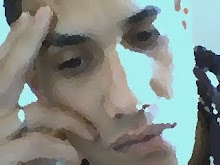Being flexible is a very beneficial bodily function that can help you to be more athletic, feel healthy and avoid injuries and pain. Those that feel like their muscles are tight may believe that they need to stretch their muscles in order to loose them up. While this type of tightness, which is called mechanical tightness, is very common, there are other types and causes of tightness as well.
One might also experience a slightly different condition called neurological tightness. If an individual is finding it difficult to loosen their body and muscles, they may find benefit in consulting a stretch professional to determine if the issue is neurological.
Explaining Neurological Tightness
Mechanical tightness occurs when a muscle contracts and requires extension. This most frequently happens after exercise or when muscles are overworked. Performing a general stretching routine usually helps alleviate the discomfort.
In contrast, neurological tightness occurs do to overstretching. The brain senses this and sends out signals through the nerves commanding the muscles to contract. An experienced stretch professional can conduct an examination which will accurately determine exactly which condition is present.
Approach Options
A diagnosis of the mechanical type will likely be attended through massage therapies and stretching techniques, while one of a neurological nature will be approached completely different. A practitioner will use the data collected during the examination to pinpoint the exact source. It is most commonly due to stretched nerves. The care provider will be able to formulate a great plan of approach to attend one's pain and discomfort.
Support Follow Up
While the initial care will be most helpful, ongoing support may also be recommended for best results. A person might be required to continue therapy for a time. Practitioners will also be able to provide advice and guidance on how such issues can be avoided and prevent recurrence.
One might also experience a slightly different condition called neurological tightness. If an individual is finding it difficult to loosen their body and muscles, they may find benefit in consulting a stretch professional to determine if the issue is neurological.
Explaining Neurological Tightness
Mechanical tightness occurs when a muscle contracts and requires extension. This most frequently happens after exercise or when muscles are overworked. Performing a general stretching routine usually helps alleviate the discomfort.
In contrast, neurological tightness occurs do to overstretching. The brain senses this and sends out signals through the nerves commanding the muscles to contract. An experienced stretch professional can conduct an examination which will accurately determine exactly which condition is present.
Approach Options
A diagnosis of the mechanical type will likely be attended through massage therapies and stretching techniques, while one of a neurological nature will be approached completely different. A practitioner will use the data collected during the examination to pinpoint the exact source. It is most commonly due to stretched nerves. The care provider will be able to formulate a great plan of approach to attend one's pain and discomfort.
Support Follow Up
While the initial care will be most helpful, ongoing support may also be recommended for best results. A person might be required to continue therapy for a time. Practitioners will also be able to provide advice and guidance on how such issues can be avoided and prevent recurrence.
About the Author:
To practice your flexibility Johns Creek GA folks should seek help from our expert practitioners. Request for further information now from http://www.stretchzoneatl.com.


